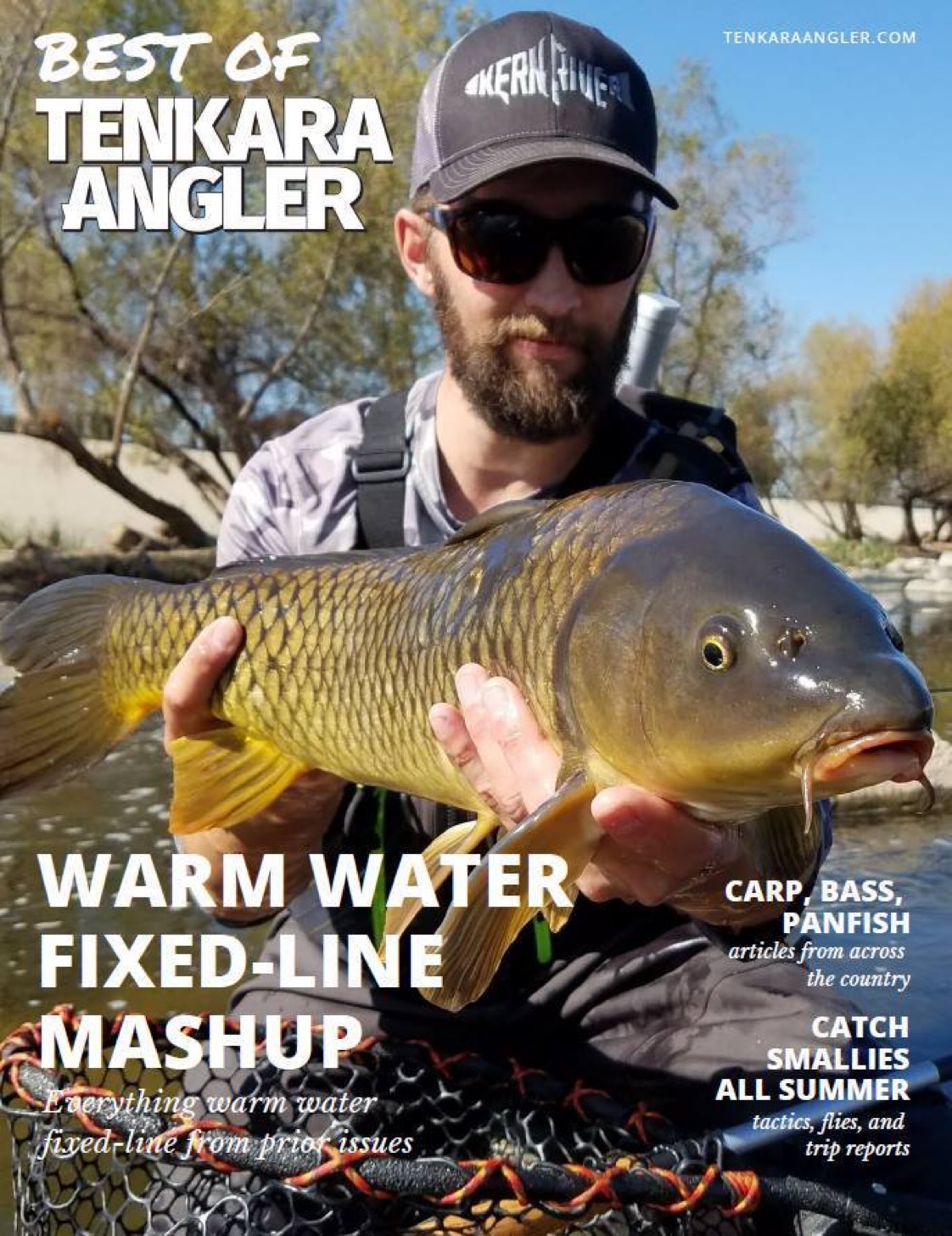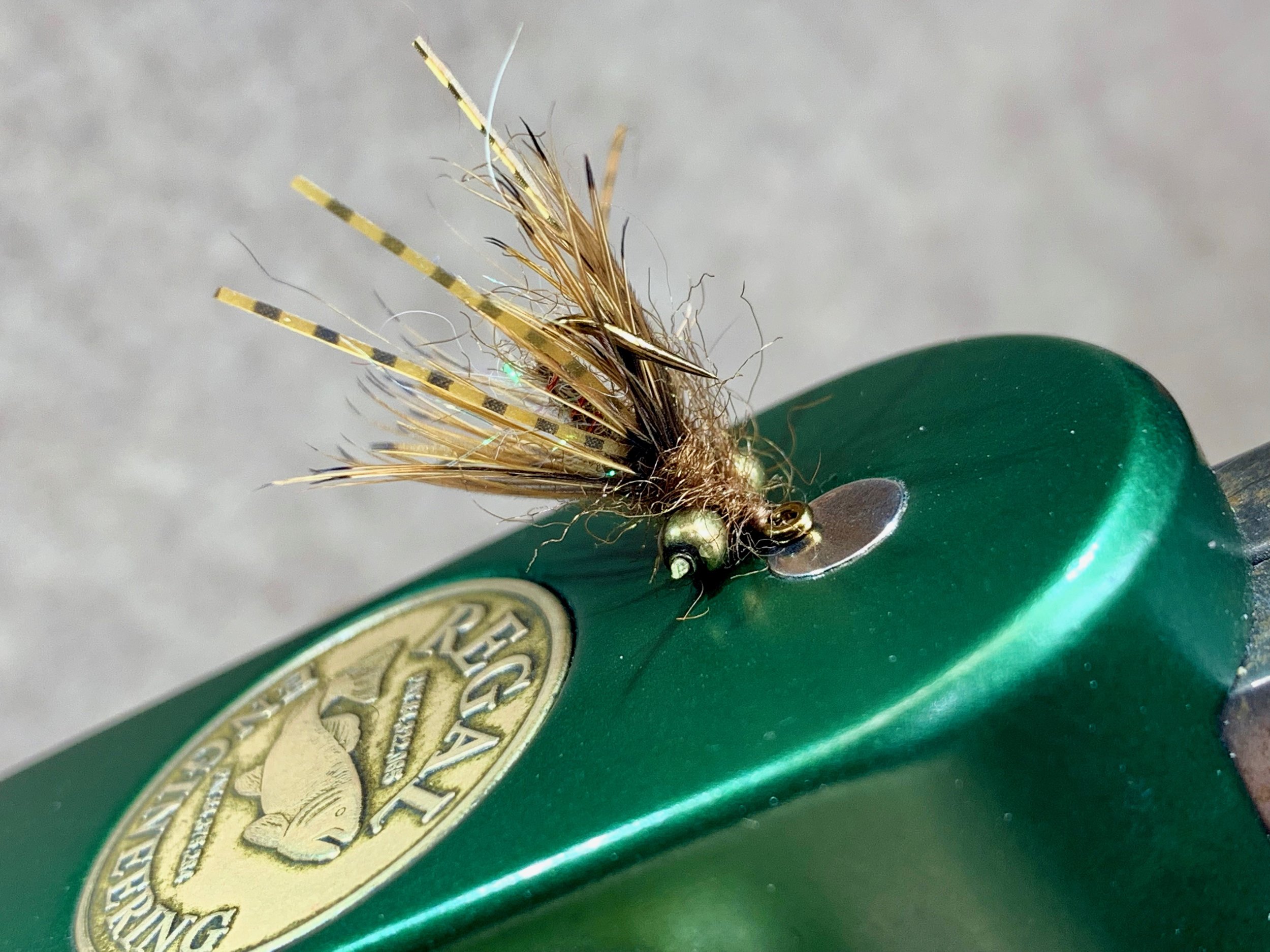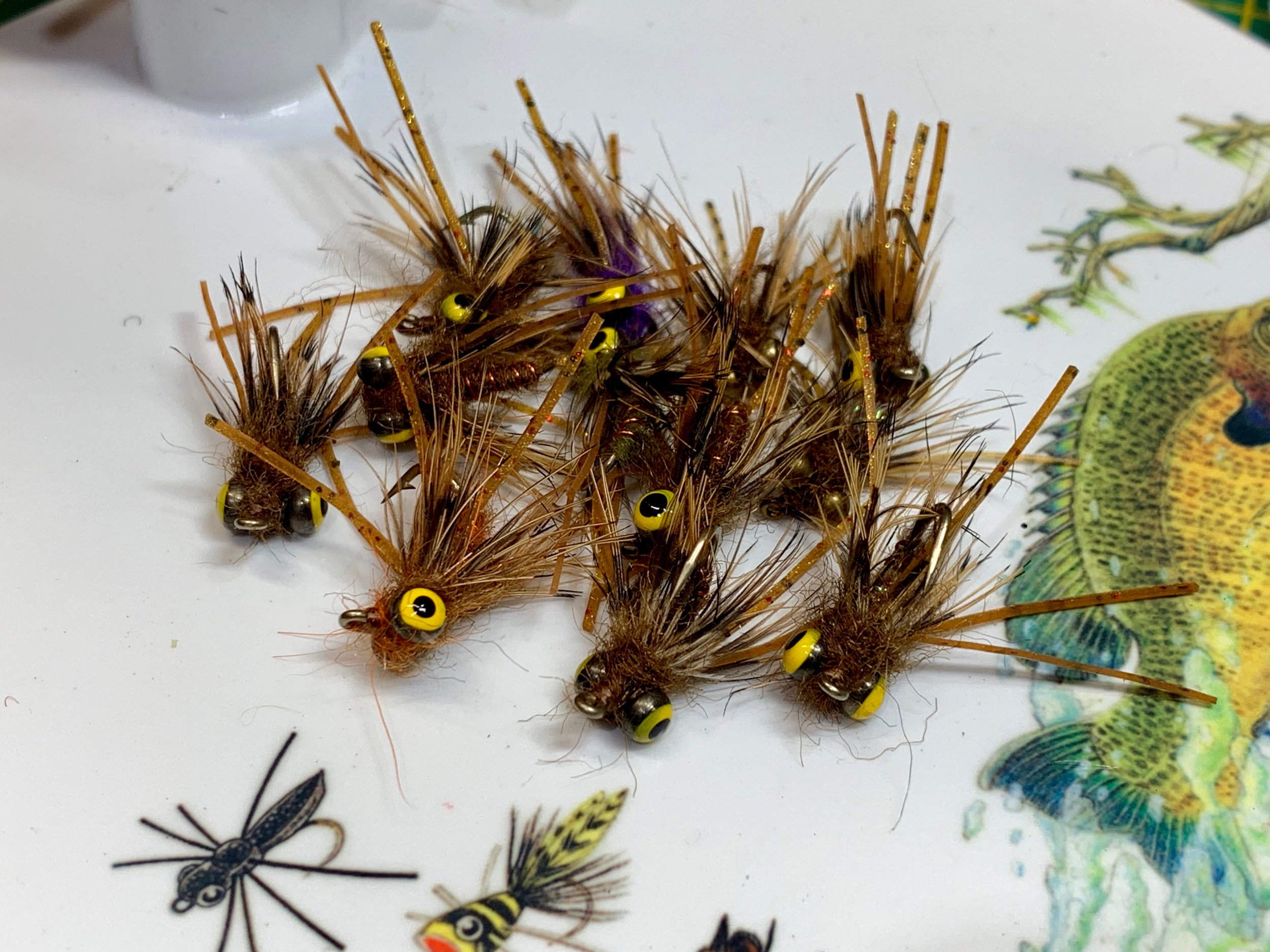Fly designer and fly shop owner, David Hise’s Carp Nasty has been a staple in my carp fly boxes for years. This impressionistic fly pattern does not imitate any particular food item a carp’s diet but looks a little like most of what a carp eats! It could be a crayfish, a big stonefly or mayfly nymph, a hellgrammite, a dragonfly nymph or any number of creepy crawlers that make their living scooting around on the bottom of a pond, lake or stream.
Not Just For Carp
This pattern has proven its worth for me by hooking dozens of carp over the years. What I have enjoyed even more is the numbers of other fish I have taken on this pattern. Bass of both the small and largemouth varieties, catfish and panfish by the score! I usually fish this fly in a size 8 or 6 for carp, and at that size, it is a bit of a mouthful for average bluegill. Smaller fish will often pick it up by its legs and swim off resulting in missed or foul hooked fish. At some point, I began tying the fly smaller to target panfish only. The only change I made to the fly was replacing the painted lead dumbbell eyes with those made from metal bead chain. This was done to lighten the fly and slow its sink rate down a bit. This panfish version of the Carp Nasty is still an excellent carp pattern, especially when the fish are ultra spooky in clear shallow water. The fly lands with a smaller disturbance, and it's lower profile is less likely to cause a wary carp to bolt when you twitch it in front of his nose. However, this pint-sized version really appeals to bluegill and other sunfish.






